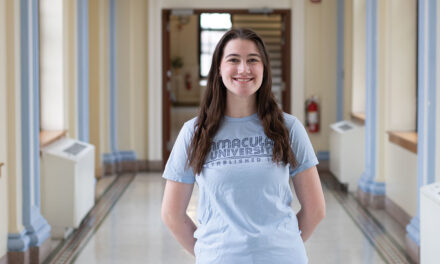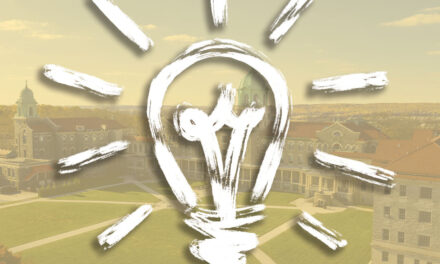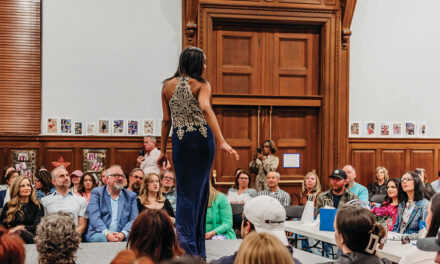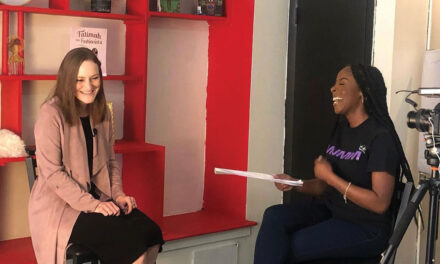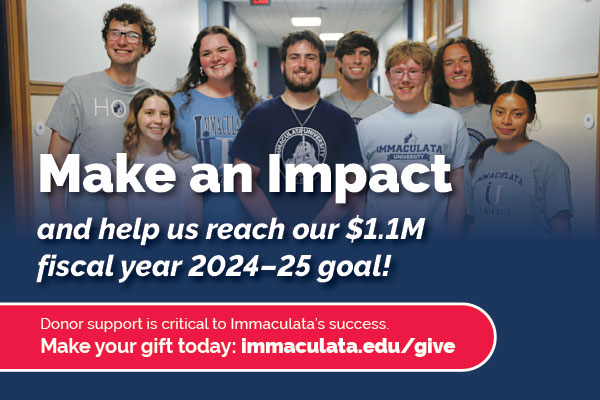By William Carr, D.M.A.
Steinway artist, Professor of Music and Piano
Music Department, Immaculata University
As the first resident scholar/artist-in-residence for the Malvern Preparatory School for the 2023–2024 academic year, I will have the opportunity to teach and inspire younger students about the importance of using creativity to solve problems, reach more effective decisions and understand its lateral implications across diverse disciplines. When individuals perceive the importance of creative thinking, their conceptual framework is broadened, and deferring judgments becomes part of a natural process for reaching wider possibilities for solutions. I have found that most educational institutions, including Immaculata, place a high priority on defining standards through assessment, evaluation and summation, while the intrinsic focus of today’s students, because of technology, is rooted in a paradigm of process, facilitation and modeling. There is a disconnect with current students.
With my musical performance education at the Juilliard School in piano performance and with my additional graduate degree studies at the Wharton School of the University of Pennsylvania, I became a business and creativity consultant to over 30 multinational corporations both in the U.S. and abroad, and to the graduate schools of business at Columbia University, Dartmouth College and at the Aresty Institute (Wharton School) of the University of Pennsylvania. Through my research at Wharton, I learned that there are over 100 models and theories of creativity, both convergent and divergent. All, to some degree, have direct application to business and leadership.
Many years ago, I created “Informances,” where audiences could appreciate creativity through a musical performance because they would be experiencing (seeing and hearing) the creative process “in motion.” Then discussions emerged for lateral implications for management of people, marketing and strategic planning in business. So, an artist/musician could serve as a catalyst for greater understanding of creative thinking, creative systems theories and new possibilities for corporate strategic policy implementations. For example, during my time as a consultant for Procter and Gamble, I observed the creation of the Pringles potato chips. Synectics, the company that worked on the design, was a divergent model of creative problem-solving, which states that all answers to problems can be found in “nature.” To illustrate the point, when the research and development unit at Procter and Gamble attempted to package the potato chips in a can, they crumbled. Synectics said, “You need to observe leaves on a hill” to learn that moisture enables the deepest leaf on the hill to retain its shape.
As I enter my 31st year as a professor of music and piano at Immaculata, I am excited to return to my alma mater, Malvern Prep School, to work with younger children who are developing their talents and gifts and also with the exceptional faculty at the school. I am also privileged to be partnering with the Curtis Institute of Music as part of the performance presentations at Malvern for the students and faculty. After each performance, I will be explaining the music to the listeners through the lens of the creative process and how lateral perceptions of performance practices might be used for creative thinking in other disciplines. For example, my Juilliard professor would often relate piano practicing to baseball pitching (insight restructuring) with the importance of not only practicing for finger development but for wrist flexibility. I would often need to read articles about sports mechanics for piano practice while at Juilliard.
One of the goals of the artist-in-residence program is to ignite the imagination of young students through musical performance excellence and creativity. When students and faculty who are trained to think analytically, logically, linearly, vertically and propositionally discover conceptual, lateral, divergent, creative and cyclical approaches to thinking, the morphological dimensions for solutions become not only a focus but a reality. No longer are students simply satisfied with answers. Instead they gain a deeper understanding of how process leads to new possibilities for comprehension and learning. In today’s technological environment and as societies become more global, understanding cross-cultural perspectives to the creative process might become the difference between survival and failure in a world of intense global competition.
For today’s students who will eventually become the future leaders, their need to understand creative problem-solving and decision-making will be crucial for realizing accommodation processes both between and within societies and for appreciating the deeper dimensions of the innovation process.
My opening presentation to the students at Malvern Prep School will be August 28, 2023, in the Duffy Center for the Arts, and my opening piano performance (solo) will be October 12, 2023, in the Duffy Center for the Arts.


